Hello!
I am sure most people have heard about hydroponics gardening at some point in their life but do you really know what hydroponics gardening is? This is something I have always wondered. In this post, I will discuss the history of hydroponics gardening, benefits of hydroponics gardening, the nutrients used for hydroponics and how to build your own hydroponics system. What you need to know about hydroponics Gardening.
History of Hydroponics Gardening
Here is some history of hydroponics gardening. The hydroponics technique dates back thousands of years ago. In Babylon they used hanging baskets and China used floating gardens. The theory of hydroponics is the same but we have advanced technology now to grow bigger, healthier and stronger plants. Hydroponics the earliest reference was about 100 years ago, by a man named William Gericke, who worked at University of California – Burkley College, and grew a 25-foot tomato vine with using water and nutrients. After this happened it promoted more research into this method he called Hydroponics.
Benefits of Hydroponics Gardening
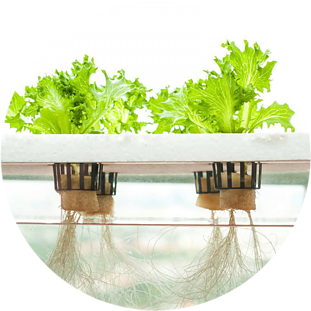 The biggest benefit of hydroponics gardening is water conservation. Giving too much water or too little water to a plant using soil could be detrimental to the plant. Hydroponics solves this problem. The three ways hydroponics solves this problem are;
The biggest benefit of hydroponics gardening is water conservation. Giving too much water or too little water to a plant using soil could be detrimental to the plant. Hydroponics solves this problem. The three ways hydroponics solves this problem are;
- Uses less water – having a reservoir recirculates the water to be used over and over again. Where if the plants were in soil most of the water goes in the ground and little of it actually is used for the plant.
- Oxygenated Nutrient reservoir – the reservoir has a pump to keep he water oxygenated to give the plants optimum oxygen level for the roots’.
- Having Control of Growing – The Gardner has total control over the environment, temperature, humidity, pest control and more. You also have control of the amount of nutrients given to the plants.
This could be the gardening of the future and already started all over the world. People are taking control of the way their food is grown. We have a world now where fresh water and food supply could be in danger of staying clean. Hydroponics is a way to grow your own food using water. There is another method similar to hydroponics, it’s called Aquaponics. See my past post, What is an Aquaponics System?
Nutrients used for Hydroponics
Before I talk about what kind of nutrients are needed, we need to know what a plant is made of. Organic matter is in all living things. Organic matter is carbon, hydrogen, nitrogen and oxygen. This is 90% of the plants weight. There are five things that a plant needs to make it grow, carbon dioxide, light, nutrients, oxygen and water.
- Carbon Dioxide – This is what the plants use to breathe. They breathe in Carbon Dioxide and exhale Oxygen.
- Light – is needed to carry out photosynthesis. Photosynthesis is the sugar or glucose to provides the plant energy
- Nutrients – primary nutrients also known as Macro Nutrients are Nitrogen, Phosphorous, and Potassium. Nitrogen is what gives the plant strong growth, dark green colored leaves and photosynthesis. Phosphorous is mainly used for root growth and development. Also helps with flowers blooming. Potassium is used to keep the plant healthy overall and resist disease. There is also Micro Nutrients as well; Boron. Calcium, copper, iron, magnesium, sulfur and zink.
- Oxygen – is part of the breathing process, and is what the plants breathes out. Humans need oxygen which is why its so important to have plants in our house and on the earth.
- Water – we all need water, plants and humans
By removing the soils (where the plants get their nutrients normally) for hydroponics we need to add nutrients to the water. Understanding what a plant needs to grow will help in either building your own hydroponics system or purchase a system.
Build your own Hydroponics System
Considering building your own hydroponic system?
There are six different types
Aeroponics – This system is similar to the NFT system. The difference here is the pump in the reservoir is constantly pumping the nutrient water mist to the roots’, instead of running a piece of felt nourish the plants. This system will need a specialized spray nozzle. This system is not as easy to set up or cheap.
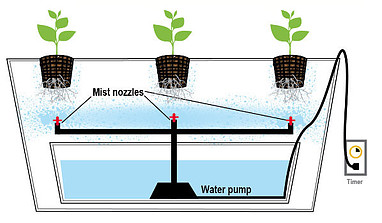
Deep Water Culture – or DWC is the easiest system to work with. This one you need a reservoir to hold the water with nutrients. The plants in a planting medium like planting nets, so the roots’ of the plants hang into the water, to get the water and nutrient supply all the time. The water will need to be oxygenated with an air pump and air stone to pump the bubbles into the nutrient mixed water. This system doesn’t work well for large plants or long growing periods but is inexpensive, easy to maintain and low waste.
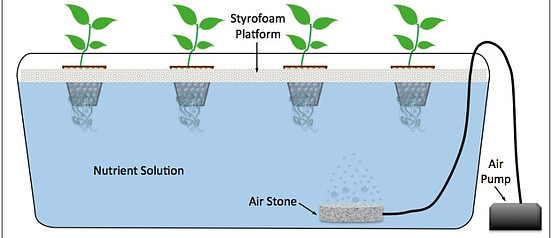
Drip System – This is another common system for the commercial market. This system is more economical on a large scale, not so much for a small garden. The water pumps into the large area where the plants are, fills the grow area, then the water drips back into the reservoir.

EBB and Flow or Flood and Drain System – This one uses a tray with a grow medium that is connected to the reservoir below where the nutrient water is being oxygenized. It’s called the Flood and Drain system because you set the pump on a timer to flood the tray where the plants are with the nutrient rich water. After it’s flooded the water drains back to the reservoir, getting re oxygenated and ready for the next scheduled flood. Need to make sure the floods are scheduled close enough so the roots’ don’t get dried out.
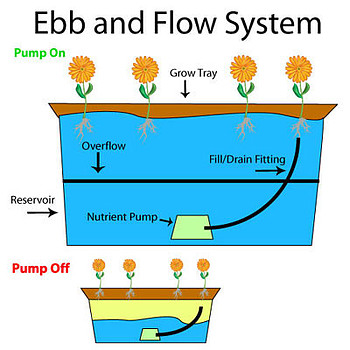
Nutrient Film Technique – or NFT – This system is mostly used in the commercial setting. It’s kind of recycling technique, the plants sit in these channels, that have nutrients getting pumped through the channels all the time. Once the nutrient rich water runs through, it goes back int the reservoir and pumps back up and does it again, continuously.
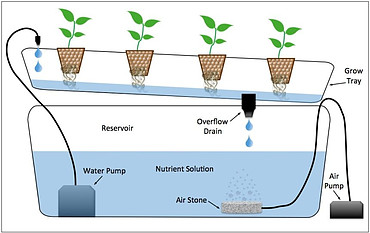
Wick System -. This is the basic type of hydroponic system. This system doesn’t use any air or water pump. How this works is the water nutrients pass by the roots’ system through a wick system which can be a piece of felt or a rope.
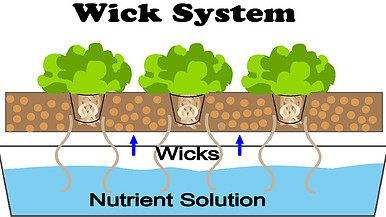
Happy Planting!
I hope you found this helpful, as I did learn from this blog too. I didn’t know there were several hydroponics systems out there. I find it fascinating that you can grow vegetables without soil. I think if I lived in the south I might consider having one of these because I would need it to be outside. The pumps I’m sure make noise, LOL.
If you are interested in your own DIY hydroponic project, check out these ebooks!
Simon’s Simple Hydroponics Plans Giant Ebook
or
Getting Started in Hydroponics: Expert Tips, Plans & Secrets
Has anyone out there grown with hydroponics?
Do you like growing with hydroponics?
Check out my Review for Hydroponics Gardening Kits
Let me know your thoughts in the comments below
Cheers!
Chris

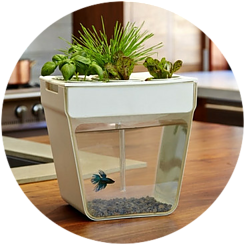
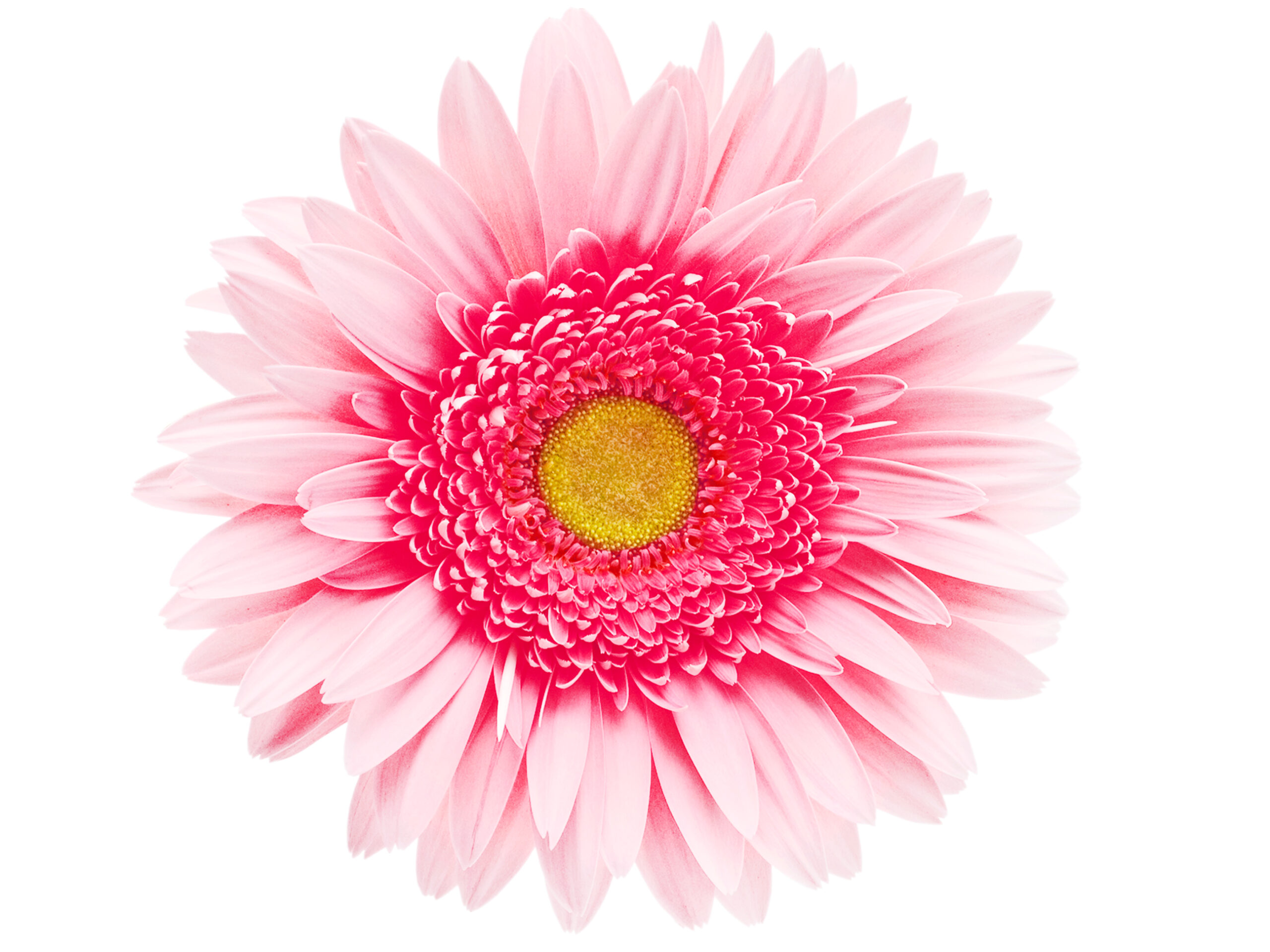


Hey Chris!
That’s a pretty great article you have created there! I really like how you point out all the aspects of hydroponics gardening, from history to benefits and functionings of it. In the past I used to have plants and honestly had problems to maintaining them because I never knew how much water I should give them. If I would have come across hydroponic gardening earlier it perhaps would have solved this problem easily. I really like that hydroponic gardening gives you control of growing. I think this is an important aspect, because you will feel more confident about what you are doing or what you have to do in the next step of your gardening. Thank you for this article, I will definitely give it a share! All the best,
Sj
Thank you Sergej! You could do a small hydroponics garden or they have smart gardens for indoors. I did a review for a SmartGarden, its like a coffee pod, you put the seed in the pod and put water in the SmartGarden, plug it in and has LED light to help grow. You can put it anywhere you have power in your home. Grow your own salad in your home. You should try it again.
I’m so glad I found this article that will help us to build our own hydroponics system. After the COVID shutdowns last Spring, we started our first garden and “grew” to really love having fresh food that we had cultivated. However, as the weather turned colder, our outdoor garden was no longer able to produce for us. I think that a system without a pump might work nicely indoors during our winters so that we can at least grow fresh herbs all year. Thanks for all the resources — the diagrams were especially helpful to understand how each different type of system works!
Thank you for your comment. Having a small hydroponics system indoors for the winter is a great idea. Growing your own food is so much better for you. Stop back for more gardening tips!
I’ve been doing some research over the years in building a garden in order to grow my own food. There’s a lot of uncertainty around the world that is affecting many people’s lifestyle and ability to maintain a job. I’m glad I came across your article. With the recent Covid-19 situation that has severely affected the world’s economy, millions of businesses have gone under and millions of people have lost their jobs and are struggling to survive. The resources you provided along with an explanation of each system seems well worth the investment. I will be looking into it really soon. Thanks for writing a great article.
Hi Richard,
Thank you for your comments. I have to agree with you about the uncertain times. People are looking to find alternatives for growing their own food and to stay out of FEMA lines when times get really tough. Check out this e-book on how to DIY your own hydroponics system. This will help you with what you need to start your own hydroponics system.
Do you know where one could get a miniature version of a hydroponic garden just to try it out first and see if I can get anything to grow successfully? I definitely don’t have green fingers, and I battle to keep my pot plants alive, so I would like to see if I can make this work before going too big.
Hydroponic gardening looks interesting and it saves water which is a great plus for me as we live in a very dry country. To be able to grow your own food in this manner could be a lifesaver, especially for communities that don’t have a lot to eat.
Hi Michel,
I am not sure how small you are looking. there is this one from Amazon https://amzn.to/2P9oieh and something smaller check out Click and Grow, this is a smaller type. Hope this helps! Stop back for more tips!